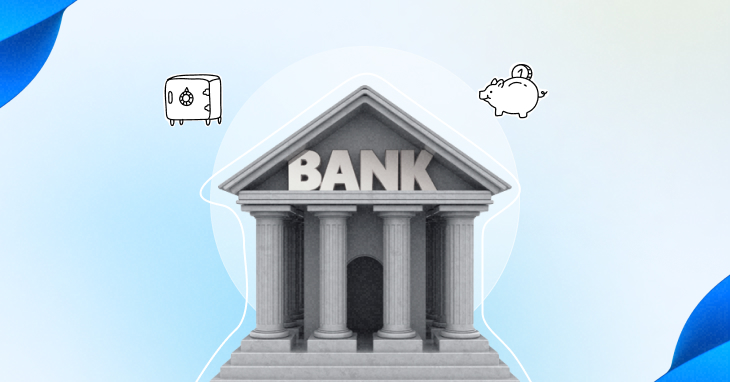The importance of aligning CRM with the RBI’s vision, explore how it can elevate customer experiences, streamline operations, and contribute to the overarching goals of a digitalized banking future.

In the ever-changing landscape of the banking sector, a pivotal aspect for financial institutions is aligning their Banking CRM with RBI’s vision of goals for digital banking transformation.
The RBI’s vision encompasses a comprehensive approach to adopting cutting-edge technologies, fostering financial inclusion, and ensuring the security and efficiency of the banking ecosystem.
This article delves into the importance of aligning CRM with the RBI’s vision, exploring how it can elevate customer experiences, streamline operations, and contribute to the overarching goals of a digitalized banking future.
The Reserve Bank of India has been at the forefront of fostering digital transformation within the banking sector. In line with its vision, financial institutions are encouraged to adopt cutting-edge technologies that not only meet regulatory requirements but also elevate customer interactions.
One of the key components in achieving this transformation is the alignment of banking CRM systems with the RBI’s vision, ensuring a seamless integration of technology for a robust digital banking future.
Understanding RBI’s Vision: A Blueprint for Digital Transformation
The Reserve Bank of India’s vision for digital banking transformation revolves around key principles such as promoting financial inclusion, enhancing security, and improving overall efficiency.
This vision encourages financial institutions to leverage emerging technologies, including Artificial Intelligence (AI), Machine Learning (ML), blockchain, and data analytics, to create a dynamic and customer-centric banking environment.
The Crucial Role of CRM Alignment
A central element in achieving the goals set by the RBI is the alignment of CRM software with the vision for digital transformation.
A well-integrated CRM system serves as the backbone of a bank’s digital strategy, providing the tools necessary to harness customer data, automate processes, and personalize services. This alignment ensures regulatory compliance and positions banks to deliver agile, responsive, and customer-centric experiences.
A well-integrated CRM system is the backbone of any bank’s digital strategy. By aligning CRM with the RBI’s vision, financial institutions can effectively leverage customer data, automate processes, and personalize services. This alignment not only ensures regulatory compliance but also positions banks to deliver a more agile and responsive customer experience.
Elevating Customer Experiences through CRM
As customer expectations continue to evolve, a digital-first approach is essential for meeting these changing demands. Aligning banking CRM with the RBI’s vision enables financial institutions to intelligently leverage customer data. This, in turn, facilitates personalized services, targeted marketing, and seamless Omni channel experiences, fostering stronger customer relationships and loyalty.
A customer-centric approach is at the core of elevating the banking customer experience. CRM systems provide a comprehensive view of customer interactions, preferences, and behaviours. By harnessing this data intelligently, banks can personalize services, anticipate needs, and create tailored experiences that resonate with individual customers.
Streamlining Operations for Enhanced Efficiency
Efficiency gains are a core objective of the RBI’s digital transformation vision. CRM systems play a pivotal role in streamlining internal processes, reducing manual interventions, and optimizing resource utilization. By automating sales tasks through CRM, banks can enhance operational efficiency, reduce costs, and allocate resources more strategically.
Ensuring Regulatory Compliance through CRM Alignment
Adherence to regulatory guidelines is non-negotiable in the banking sector. Aligning CRM systems with the RBI’s vision ensures that banks stay compliant with evolving regulations. This involves incorporating features for secure data storage, robust authentication processes, and real-time reporting capabilities to meet the regulatory requirements set by the RBI.
Leveraging Emerging Technologies with CRM
To align with the RBI’s vision, banks need to embrace emerging technologies that enhance the capabilities of their CRM systems. AI and ML algorithms can analyze customer behavior patterns, enabling banks to offer personalized product recommendations and targeted marketing campaigns. Blockchain technology can enhance the security of transactions, reducing fraud risks.
Integrating Data Analytics for Informed Decision-Making
Data analytics is a key enabler for banks looking to make informed decisions. By integrating advanced analytics tools within CRM systems, financial institutions can gain valuable insights into customer preferences, market trends, and operational performance. This data-driven approach empowers banks to make strategic decisions aligned with the RBI’s vision for digital transformation.
Building a Scalable CRM Architecture
As the banking landscape evolves, scalability becomes a critical factor. CRM systems must be designed with a scalable architecture that can adapt to changing volumes of data and transactions. This scalability ensures that banks can accommodate growth, seamlessly integrate new technologies, and remain agile in response to market dynamics.
Implementing Robust Security Measures in CRM
Security is paramount in the digital era, and aligning CRM systems with the RBI’s vision involves implementing robust security measures. This includes encryption protocols, multi-factor authentication, and continuous monitoring to safeguard customer data and financial transactions. A secure CRM framework builds trust among customers and fulfils the regulatory expectations outlined by the RBI.
Conclusion: Toolyt: Empowering the Future of Banking CRM
In conclusion, the journey towards a fully realized digital banking ecosystem begins with the harmonious alignment of CRM systems with the visionary goals set by the RBI.
Financial institutions must recognize the significance of integrating CRM into their digital strategy to stay competitive and compliant in a rapidly evolving landscape. As part of this transformative process, tools like Toolyt can play a pivotal role in enhancing CRM capabilities.
Toolyt, with its advanced features and capabilities, empowers banks to seamlessly integrate CRM into their digital transformation journey. It offers robust tools for data analytics, automation, and security, aligning perfectly with the RBI’s vision for a digitally evolved banking sector.
By incorporating Toolyt into their CRM strategy, banks can not only meet regulatory requirements but also deliver unparalleled customer experiences, streamline operations, and contribute to the overarching goals of a digitalized future as envisioned by the RBI. Embrace the power of Toolyt to transform your CRM and embark on a journey towards a future-proof and customer-centric banking experience.
Elevating the banking customer experience through CRM is not just a strategy; it’s a necessity in today’s competitive and digitally-driven environment. A well-implemented CRM system serves as the linchpin for creating personalized, efficient, and secure interactions with customers.
As financial institutions navigate the challenges and opportunities in the banking industry, leveraging CRM remains a cornerstone for success. The continuous innovation and integration of CRM, complemented by a commitment to a customer-centric approach, will undoubtedly shape the future of banking customer experiences, ensuring lasting satisfaction and loyalty.




